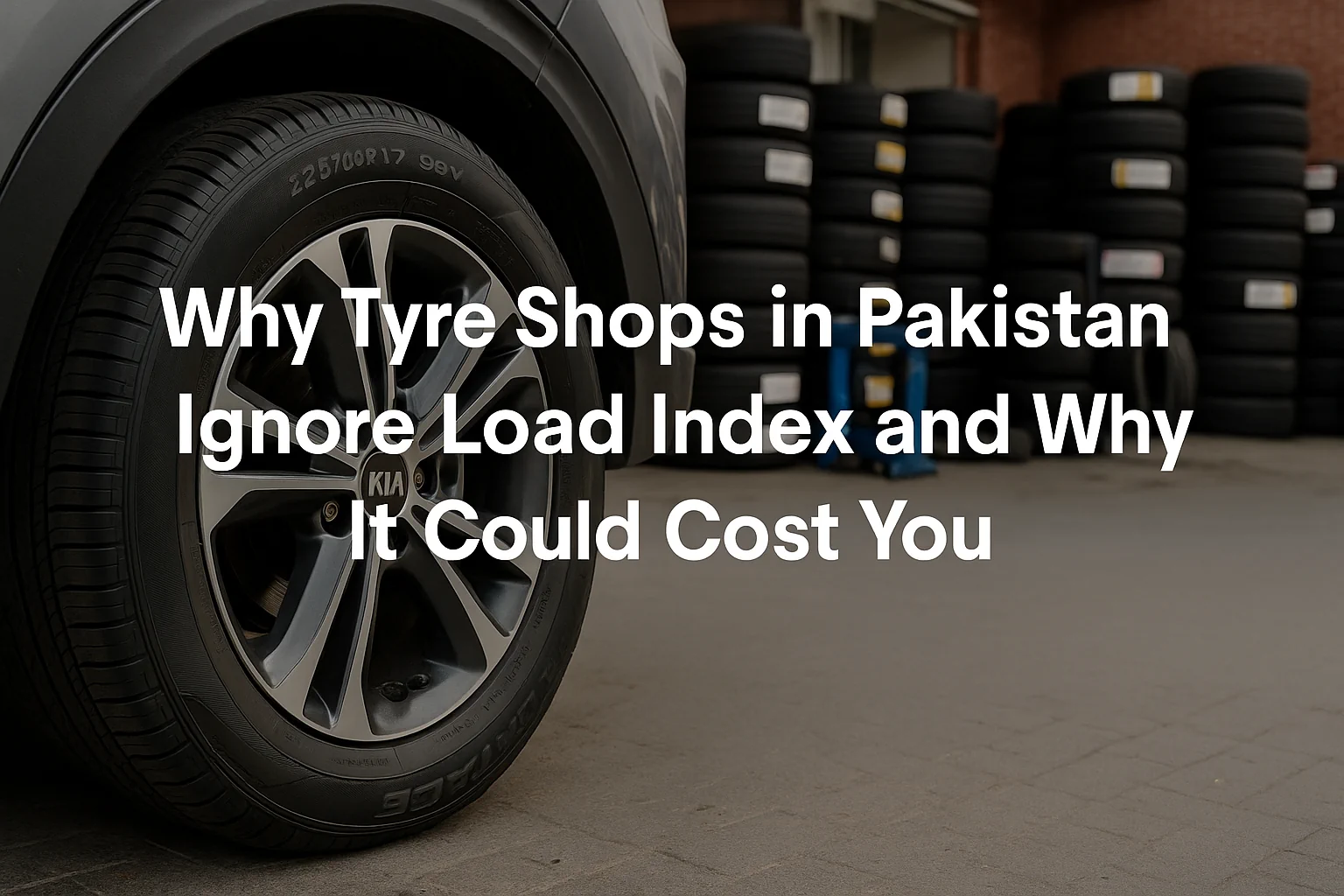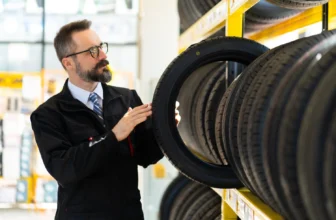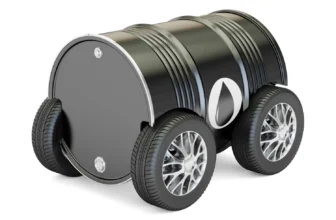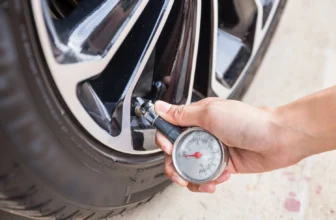
What is Load Index and Why You’ve Never Heard of It
Most car owners in Pakistan know the size of their tyres. Some even care about the brand. But ask about the load index, and you’ll probably get a blank stare – not just from the buyer, but often from the tyre shop guy too. That’s because this crucial spec, which tells you how much weight each tyre can safely carry, is rarely mentioned during a sale. And yet, it can be the difference between a smooth trip and a highway-side disaster.
The load index is a number printed right on the sidewall of your tyre. For example, if it says 185/65R15 88H, that “88” is your load index. It corresponds to a specific weight capacity – in this case, 560 kg per tyre. Multiply that by four, and you get your car’s max load-bearing capacity through the tyres. Seems basic, right? But somehow, no one explains it.
Compare that to the speed rating – the “H” in the same example – which gets all the attention. Every shop in Saddar or Montgomery Road will tell you, “yeh tyre 210 tak chalta hai.” But almost no one is asking: how much weight is it safely holding while doing that?
How Pakistani Tyre Shops Market the Wrong Priorities
Walk into a tyre shop in Lahore, Karachi, or Rawalpindi, and you’ll hear the same sales script repeated again and again: size, brand, speed rating. It’s not that these things aren’t important – they are. But they’re often sold in the wrong order, with the wrong emphasis, and with zero reference to how you actually drive your car.
The problem is twofold. First, most tyre retailers operate on razor-thin margins. Their priority is to move inventory fast. Second, they know what customers ask for – and “load index” is almost never one of those things. So they sell what’s easy: “Yokohama Japan ka hai,” or “yeh 240 speed tak certified hai.” Not because it’s the best fit, but because it’s what keeps the shop running.
- Focus on speed = higher sale price = higher commission
- Focus on load = education = slower sales process
And most customers don’t challenge this. They walk in wanting a better “feel,” maybe a softer ride, maybe something Japanese. But almost no one asks how many kilos the tyre can handle – even if they’re running a full family load, two gas cylinders, and a trunk full of wedding luggage.
Real Risks: What Happens When Your Load Index is Too Low
It’s easy to overlook, but driving on tyres with a load index that’s too low for your vehicle is a silent risk that builds up with every kilometre. Most of the time, nothing happens – until it does. And when it does, it usually shows up as a tyre failure far from help, with family or cargo in tow. The tyre didn’t explode because it was “low quality.” It failed because it was never rated to carry what you were asking it to.
Low load index tyres tend to overheat when overstressed, especially during long highway drives in summer. The sidewalls flex more, the tread heats unevenly, and internal damage builds quietly. That soft “wobble” you feel when taking a curve with a full load? That’s the tyre telling you it’s beyond its limit.
- Overheating leads to rapid wear and blowouts
- Sidewalls can bulge or delaminate under excess pressure
- Puncture resistance drops significantly on rough or broken roads
These issues show up more often in:
- High-roof vehicles like Suzuki Bolan, Hijet, Every – where top-heavy weight adds side stress
- Pickups or vans used for business with full rear loads
- Long-distance trips with full families, luggage, roof boxes, or CNG tanks
If you’ve ever had a tyre burst just outside Sukkur or blown a sidewall while descending from Murree, odds are it wasn’t a bad brand – it was the wrong load index.
Why Load Index Matters More Than Speed in Pakistan
Let’s be honest – most of us aren’t driving at 200 km/h on the M2. Our average speeds hover around 90–120 km/h, even on open highways. But what’s far more common is overloading. A GLi with four passengers, luggage stacked to the window, and a CNG tank? That’s normal. And yet, the tyres on that car are often chosen based on speed rating, not load capacity.
In Pakistan, speed sells. Tyre marketing has leaned into this because it’s aspirational. But it ignores the realities of our roads – unpredictable potholes, extreme heat, heavy urban braking, and vehicles that often carry more than they should. Under those conditions, a higher load index is far more valuable than a high speed rating.
- Load index ensures structural integrity under pressure
- Speed rating is often irrelevant unless you’re driving above 160 consistently
- Most blowouts in Pakistan are due to overloading and heat – not overspeeding
Choosing tyres for how you actually drive – and what your car actually carries – is far wiser than choosing them based on top-end performance you’ll never reach. A humble 88T rated tyre may outperform a 91V on the roads we live with daily.
The Psychology of Overspeed Obsession in Local Tyre Buying
There’s a curious trend in Pakistan’s tyre culture – a deep obsession with speed ratings. Walk into any tyre shop and you’ll hear someone proudly quoting how their tyre is “rated for 240.” It’s become a status symbol. Buyers want tyres that sound fast, even if they drive a Cultus that barely touches 100. It’s not about performance – it’s about perception.
This mindset is shaped by marketing and a lack of technical awareness. “Sporty” tyres, aggressive tread designs, and high speed letters (V, W, Y) become attractive selling points. But the reality is: most cars on our roads don’t need, and often can’t even benefit from, those ratings.
- Speed sells – but doesn’t serve everyday needs
- Load is boring – but critical for safety
Until buyers shift their focus from “kitna tez ja sakta hai” to “kitna wazan utha sakta hai safely,” the risk will continue to ride quietly under their cars.
Choosing Right: How to Pick Load Index for Your Vehicle Type
Choosing the correct load index doesn’t require you to be an engineer. It just takes a bit of attention and asking the right questions at the shop. Every tyre has its index printed on the sidewall – all you need is to match that number to your vehicle’s typical load pattern.
Here’s a simplified reference table tailored to popular cars in Pakistan:
| Vehicle | Recommended Load Index | Common Mistake |
|---|---|---|
| Suzuki Cultus / Alto | 82–84 | Buying 79 or 80 rated tyres for cost saving |
| Toyota GLi / Civic | 88–91 | Choosing tyres based only on tread width or speed rating |
| Honda BR-V / KIA Sportage | 94–98 | Using passenger car tyres on SUV chassis |
| Suzuki Bolan / Every | 89–92 (Light Truck Tyres) | Fitting car tyres that aren’t rated for commercial loads |
If you’re unsure, always go one step higher – especially if you travel long distances with full passenger load. A few hundred rupees more for a higher-rated tyre can save you thousands in repairs, not to mention safety.
Will Any Tyre Shop Tell You This? Probably Not.
The truth is, unless you ask about the load index, most tyre retailers won’t bring it up. It’s not part of their sales pitch. Not because they’re hiding something, but because the demand hasn’t pushed them to learn or explain it.
If you want to make sure you’re buying the right tyre – not just a good tyre – you’ll need to take control of the conversation. Ask for the load index. Check the sidewall. Compare it against what your car actually needs. And never assume that a more expensive tyre automatically means it’s the right one for your specific case.
- Ask: “Yeh tyre ka load index kya hai, aur mere car ke liye sahi hai ya nahi?”
- Inspect the sidewall – look for a number between 75 and 100 right after the tyre size
- Cross-check with your owner’s manual or previous tyre specs
Smart tyre buying isn’t just about deals and brands. It’s about safety, performance, and using your money where it matters most – under the weight of your own car.






